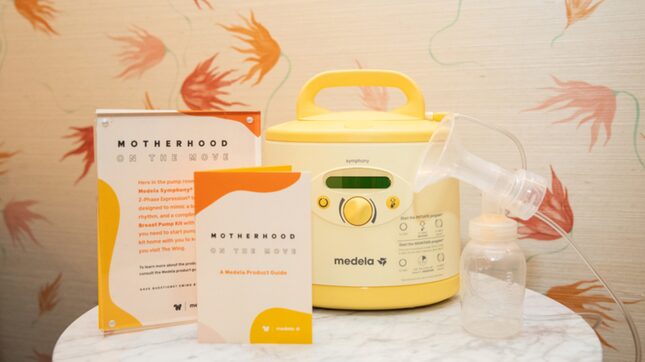The Shameful Luxury of Lactation Spaces
Latest

The women’s co-working space The Wing and breast pump manufacturer Medela have teamed up for a mutually beneficial, deeply on-brand partnership called Motherhood on the Move. Medela is stocking The Wing’s Pinterest-y lactation rooms with a host of its products, according to a press release. Those products include a breast pump that can be used by multiple people without risking milk contamination, as well as the requisite individual-use tubes, bottles, membranes, breast shields, and valves, which members can take home and (“and reuse when they visit The Wing”). To this, I say: Congratulations to Wing members, who no longer have to lug around a breast pump—as long as they are OK with being heavily marketed toward by a major corporation while also paying roughly $2,350 a year for a membership.
Admittedly, if I were a Wing member and breastfeeding, I would begrudgingly accept that trade for the sake of convenience, but the news did send me on an unexpected rage spiral about the poor state of lactation spaces, which are often treated as an optional perk (a luxury, even) as opposed to a social necessity. That is true in American workplaces, for which there are significant loopholes in federal requirements for providing pumping spaces for employees. Even when such rooms are provided, they are often enough in the supply closet or some such. In service industries, even finding the time to pump can be “virtually impossible,” as one report put it. (That is to say nothing of the sorry state of parental leave, which influences breastfeeding uptake.)
In this political context, comfortable and reasonably appointed lactation spaces become a gratuity, a potential recruitment tool, rather than a broadly mandated essential for everyone. (And it’s no surprise that breastfeeding statistics in general reflect racial and class disparities.)
-

-

-

-

-

-

-

-

-

-

-

-

-

-

-

-

-

-

-

-

-

-

-

-

-

-

-

-

-

-

-

-

-

-

-

-

-

-

-

-








































